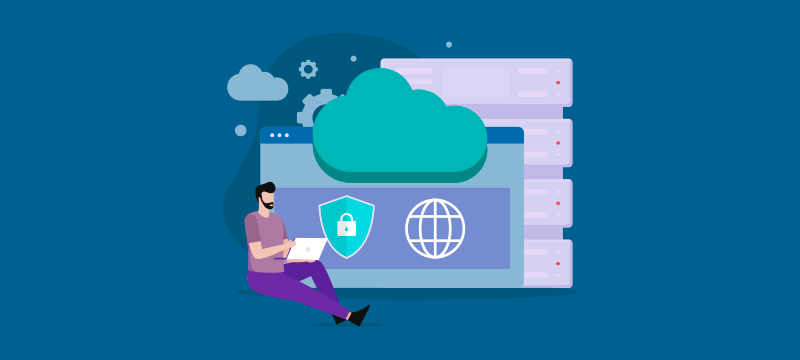Hybrid clouds have become increasingly popular among enterprises, but their complex infrastructure, combining public and private clouds, as well as dedicated servers, can make security more challenging. With data loss having potentially catastrophic consequences, including downtime, reputational damage and substantial financial penalties, organisations using hybrid cloud systems must be fully aware of how to protect their data. Here, we explain some of the measures needed to implement robust hybrid cloud security.
Start with physical security
Good physical security is the foundation of robust hybrid protection. It begins with putting measures into place that prevent data loss from issues like natural disasters, accidents, power failure, loss or theft.
One of the basic principles of physical security is to locate the data centre away from other buildings. This ensures that if a fire starts in one building, it cannot spread to the data centre. In addition, the data centre should be protected by physical boundaries, like fences, be patrolled by security guards, have CCTV cameras (including infrared night vision cameras) that link to a central security hub, and have access control systems in place so that only authorised personnel can enter the facility, while internal access to specific areas is granted only to those who need it. In addition, the data centre needs a backup power supply so that if the grid goes down, services can continue.
Of course, there is always the possibility that a natural disaster, like an earthquake or flood, could take the entire data centre offline. For this reason, a backup data centre offers the best solution for continuity as servers can be brought back online in a different geographical location.
Such measures, however, come with a hefty price tag. For most enterprises, the cost-effective solution is to use the services of a cloud provider that already has this security in place.
Defend against common data loss causes
With robust physical protection in place, the next important element of hybrid security is to defend against the common causes of data loss. These include device failure, human error and malware corruption.
Advanced tools can be deployed that play a critical role in this form of security. Next-gen firewalls, for example, defend against hacking and malware intrusion from both external and internal sources. The latest proactive system monitoring tools, meanwhile, use advanced technologies like AI to detect issues that could lead to hardware failure, enabling preventative measures to take place early before failure takes place.
One of the benefits of a hybrid system is that with data stored across the vendor’s many machines, if a hardware failure does occur, a backup can be initiated straightaway so that data remains available. As a result, staff and customers won’t even be aware that an incident has occurred. For double assurance against data loss, however, storage can be configured so that data cannot be erased. This way, any saved files will always be available for recovery.
Data breach protection
As cybercriminals become more sophisticated, enterprises need to guard themselves against the threat of a data breach. Phishing and social engineering attacks, in particular, are getting smarter and rising in number. One potential issue, especially with the rise in remote working, is when employees use personal devices and accounts to store company data. Not only does this leave the company in the dark about what data is stored; personal devices and accounts often lack the enterprise-level authentication and encryption necessary for data protection. This leaves organisations at risk of both data breaches and non-compliance.
Hybrid cloud architecture can help minimise the threat of a data breach by delivering at-rest and in-transit encryption in conjunction with ID and device management technology. This can control how files are shared and prevent employees from saving data to personal accounts.
Ensuring recovery and continuity
Disaster recovery is essential for enterprises and is often achieved by using separate storage for primary data and backups. This isn’t necessary with the hybrid cloud as the same storage can be used for both. Additionally, as hybrid storage architecture puts data into a single store, multiple copies of files are prevented from being kept on separate file servers, reducing storage costs and stopping copies of the same file being stored in different places.
To ensure business continuity, backup solutions need to create automated backups at the frequency at which the enterprise needs them. This way, should a disaster occur, the data held in backups is as up to date as required so that customer orders, file updates and so forth made shortly before the disaster are not lost. For enhanced security, the backups should be encrypted and their content integrity checked to ensure that the data is not corrupted.
Conclusion
A hybrid cloud provides a highly secure solution for enterprises by adding the single tenancy private cloud to the infrastructure. It also provides end to end architecture that protects data at rest and as it moves between locations. Crucially, a solutions provider, like Hyperslice, which already has all these security measures in place, makes hybrid cloud more cost-effective than creating the infrastructure in-house.
For more information, visit Hyperslice.com.

